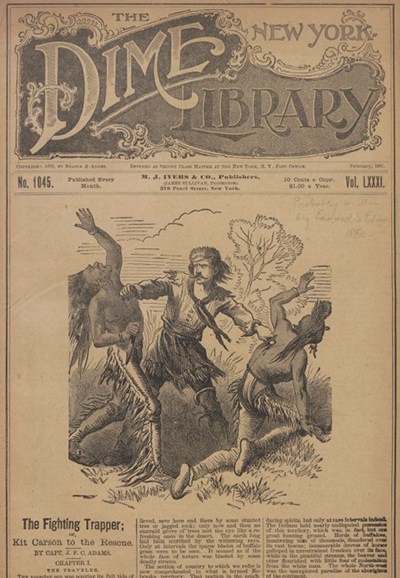
Brady-Handy photograph collection, Library of Congress; Kit Carson Museum; History Colorado-Denver, Colorado He is a figure who still inspires awe and admiration in hundreds of visitors to Fort Union for his bravery and skills in America's wilderness. He is also a figure who led the destructive and devastating campaign against the Navajos and their homeland, a campaign of "total" warfare that took place a full year before Sherman's "March to the Sea" in Georgia. He is a figure who, with his Hispano wife, raised at least one orphaned Indian child in his household. He is also the figure who attacked the Mescalero Apaches, the Kiowas and the Comanches with the same fervor he displayed against the Navajos. Finally, he is a figure who, ill and nearing the end of his life, accompanied Ute Indian leaders on an exhausting trip to Washington, DC, in an effort to help them establish a reservation in Colorado. Kit Carson was a complex person who embodied many shades of gray, but his reputation is beholden to a modern society looking for simple answers in black and white. 
Image courtesy of Northern Illinois University The LegendCarson's exploits were truly legendary. When the White Family was attacked on the Santa Fe Trail near the Canadian River in northeastern New Mexico in 1850, Carson and a small military detachment rode to attempt a rescue. At the site of Mrs. White's abduction, they found a dime novel (probably being read by Mrs. White) about Kit Carson rescuing a woman from an Indian attack. Kit could not read the book because he was illiterate, but he understood that the written word had spread his fame far and wide. A short time later, the rescue party found Mrs. White's still-warm body. Kit's "failure" to save Mrs. White haunted him for years. In 1854, then-Major James Carleton hired Carson to scout for the U.S. Army dragoons, who were trying to recover stolen horses from the Jicarilla Apaches. The party was struggling to follow the trail through the Sangre de Cristo Mountains, but eventually Kit had enough clues that he confidently predicted to Carleton that they would find the Jicarilla camp by 2 o'clock that afternoon. The highly skeptical major said he would buy Carson a fine beaver hat if the camp was discovered as promised. Later that day, shortly after 2 pm, the dragoons found the Jicarilla camp. Several months later, a fine beaver hat from New York City arrived at Kit's house in Taos, NM, with an inscription on the hatband: "At 2 o'clock, Kit Carson, from Major Carleton." 
University of New Mexico Loyal to a Fault?
Carleton's attack on the Comanches and Kiowas, carried out by Carson (with assistance from Ute and Jicarilla Apache scouts), was intended to be as severe, but failed because Carson's troops were so badly outnumbered. In his campaigns against the tribes, Carson commanded troops of the New Mexico Volunteers. The New Mexico Volunteers were mainly Spanish-speaking laborers and farmers, very different from the typical U.S. soldier. Despite tremendous prejudice against the New Meixco troops from the Regular Army, Carson stood by his men. "They are more energetic and untiring in pursuit, enduring a large amount of physical fatigue," Carson observed. "And when well officered, their courage is unquestionable." 
Library of Congress A Sullied ReputationCarson was intimately familiar with indigenous cultures, but he remains persona non grata among tribal members in the Southwest. Carson's first wife was a member of the Arapaho tribe, who died after giving birth to their first child. His second marriage to a Cheyenne woman lasted only briefly. When apprised of the Sand Creek Massacre in 1864, where dozens of peaceful Arapaho and Cheyenne were slaughtered by U.S. Army troops, Carson had this to say, "Just to think of that dog Chivington and his dirty hounds, up there at Sand Creek. His men shot down squaws, and blew the brains out of little innocent children. You call such soldiers Christians, do you? And Indians savages? What do you suppose our Heavenly Father, who made both them and us, thinks of these things?" Kit's name is still memorialized around the West: Carson City, Nevada (the state capital); Carson National Forest in New Mexico; the U.S. Army's Fort Carson in Colorado; Kit Carson Peak (a 14,000-foot summit in Colorado), and the Carson River in Nevada. But his monument in Denver has been taken down and his monument in Santa Fe has been removed from public view. While Carson and his monuments suffer the slings and arrows of changing attitudes, the assessment of his exploits, good and bad, remain in the eye of the beholder. |
Last updated: March 28, 2024
